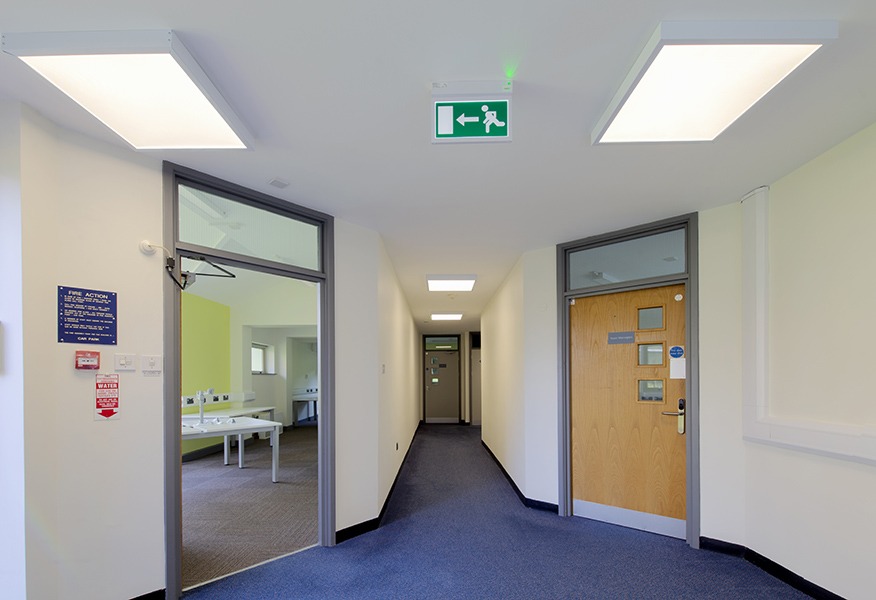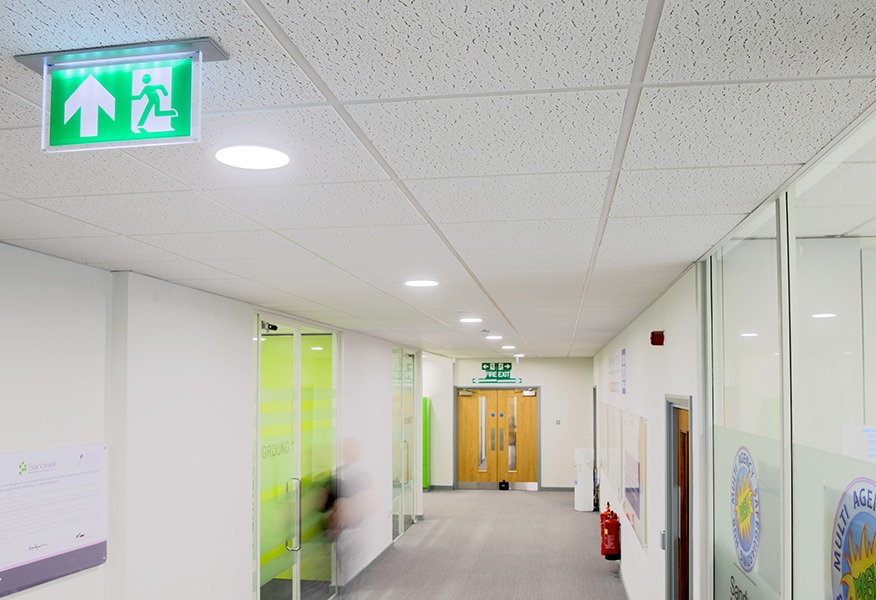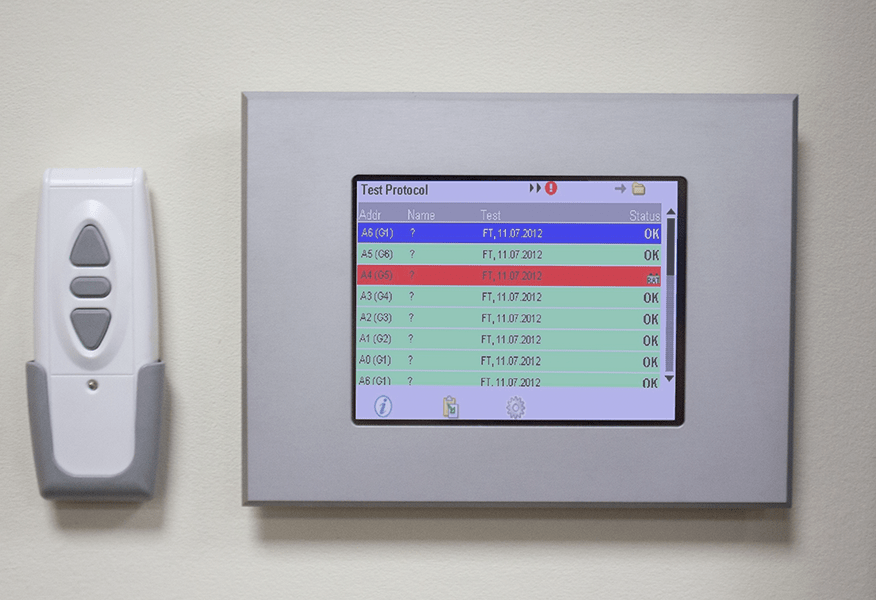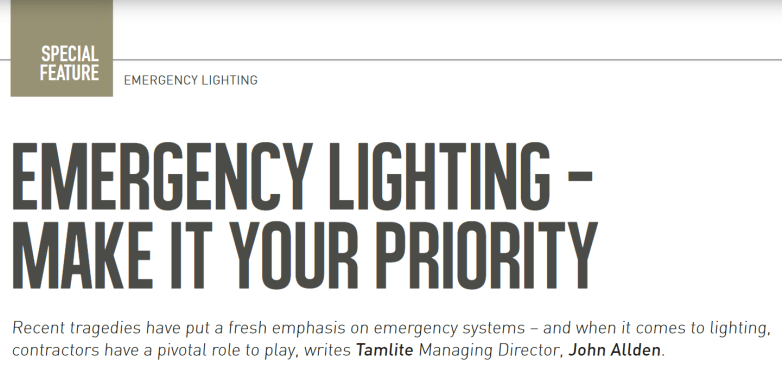
How we can ensure emergency lighting is top priority
Recent tragedies have put a fresh emphasis on emergency systems - and when it comes to lighting, contractors have a pivotal role to play, writes Tamlite Managing Director John Allden.
In an era in which health & safety has attained an ever-higher profile in the public consciousness, you could easily assume that emergency lighting is a de facto priority in the development and maintenance of all buildings. Unfortunately, our experience over the last ten years indicates that, all too frequently, it is still an issue that is being tackled in the later stages of a project, and sometimes with inadequate knowledge of the technical and legal requirements.
The latter seems especially hard to justify given that the regulatory framework in the UK is both clear and concise. Under the Regulatory Reform Order (Fire Safety) of 2005, emergency lighting is a legal requirement in workplaces, residential complexes and mixed-use spaces. Now required to be installed and tested in line with British Standard BS 5266:1 2016, emergency lighting should provide adequate lighting levels and directional indication in the event of a mains failure, allowing occupants to move around and/or exit the building without accident or injury.

It follows, then, that in the case of both new-builds and retrofits, the provision and maintenance of an effective emergency lighting system is of paramount importance. Due to their involvement at every stage of a project, electrical contractors are arguably best-placed to ensure that this happens, making building owners and managers aware of the implications and requirements of emergency lighting.
The expectation that they fulfil this role has surely become more acute in the wake of several high-profile tragedies, including Grenfell Tower, and related studies such as the Hackitt Report on Building Regulations and Fire Safety. Although there is no suggestion that the emergency lighting in Grenfell Tower was responsible for loss of life, there have been indications that the lighting was unable to penetrate the intense smoke in the stairwell - and, consequently, could not achieve its purpose of guiding residents and firefighters out of the building saely.

Effective engagement
More than ever there is an awareness that all stakeholders in a building need to work together effectively to ensure that all emergency systems are fit for purpose. For contractors engaging with emergency lighting, the challenge revolves around ensuring that the system addresses a number of core issues. These include: the function of the building or room/area; the mode of operation (for example, office, commercial or residential); the extent to which users are familiar with the building, including consideration of whether it receives many short-term visitors; specific usage and how it is likely to change over time; aesthetic requirements, including compliance with listed status if applicable; and the fact that different fixture heights and distances will be required for lighting in various areas of the building.
Make no mistake: this can be a complex and time-consuming task, especially with an increasing number of companies also working towards internal and external efficiency targets. In this context it can often make sense to engage with a specialist lighting company at the earliest stage of a project, since they will be able to provide access not only to the latest solutions but also guidance on any new or prospective regulatory changes.
Here at Tamlite we can attest to the increase in related enquiries over the last few years - a trend that has informed the development of new services and systems, as well as the expansion of our information resources and continued certification with a number of exacting independent standards bodies.
Seeking solutions
Tamlite was the first lighting manufacturer to have been granted ICEL membership (Industry Committee for Emergency Lighting) via the LIAQA Scheme. ICEL is a division of the Lighting Industries Association that represents the highest level of legislation for luminaire quality and specialises in emergency lighting. We also recently renewed our BAFE (British Approvals for Fire Equipment) certification for the design of emergency lighting systems after an extensive audit process.
Meanwhile, our emergency lighting product range continues to evolve. The e-CONNECT system uses the DALI protocol to deliver automatic, self-testing of emergency lighting installations - a capability that is increasingly regarded as essential for large buildings and estates. In early 2020 Tamlite will introduce Vision Smart, which utilises wireless connectivity to achieve more finely tuned automatic testing.

Deployed in conjunction with our latest LED lighting systems for optimum energy efficiency, these systems can provide peace of mind to contractors eager to ensure that emergency systems remain fully operable. Underlining the importance of a system’s post-installation life, we are also able to undertake statutory monthly and annual testing.
As recent events have illustrated all too painfully, there is no space for cutting corners when it comes to emergency building systems. As well as stressing the legal and moral imperative of regulatory compliance, building contractors who can convey the benefits of investing in high-quality and durable systems to clients will also benefit - in both the short- and long-term.
With many inside and outside the industry calling for additional safeguards, there is a good chance that extra regulations and assessment will be introduced in the future. In this context, it is probable that many will opt to partner with a specialist lighting provider, safe in the knowledge that this provides the most direct route to achieving an emergency infrastructure that is entirely fit for purpose.
This article was featured in the January 2020 edition of Electrical Contractor News.
